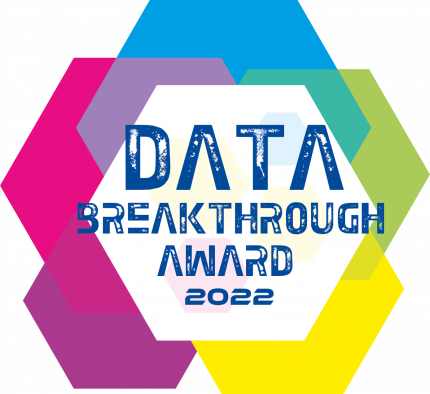Red Hat’s AI cloud service platform almost didn’t happen. And all the benefits it provides—enabling a curated and supported Jupyter-as-a-service platform that IT operations can provide to their organization’s data scientists and intelligent application developers while still maintaining control—would not have been possible.
Hosted Jupyter notebooks via OpenShift: How we got here
Open Data Hub (ODH) is a project that provides open source tools for running large and distributed AI workloads on an application platform based on Kubernetes, specifically Red Hat OpenShift. Currently, the Open Data Hub project provides tools for data storage, distributed AI and Machine Learning (AI/ML) workflows, Jupyter Notebook development and monitoring.
When the project started in 2015, however, its goals were much less ambitious. Like many of the best open source stories, this all started because we wanted to scratch our own itch.
Red Hat needed a solution for its own internal IT challenges related to mining data contained in log files as part of continuous integration (CI) for its build processes. As Red Hat engineers started expanding its use beyond log files to include customer sentiment analysis and anomaly detection, they started getting called into executive briefing centers to explain what they were doing to solve real-life AI/ML problems. After hearing the approach, some of those customers wanted to know, “How can I buy it?"
Jupyter-as-a-service with TensorFlow and more
Open Data Hub has evolved to include more than 20 different innovative open source technologies that are stitched together in a Kubernetes meta-operator that simplifies their installation and usage. Many organizations continue to use Open Data Hub in its entirety, or just pick and choose components to accelerate the use of innovative open source technology and reduce their AI/ML infrastructure software costs.
When the decision was made to turn the core capabilities of Open Data Hub into something companies rely on Red Hat to support, Red Hat chose to implement a cloud service with a half dozen of the technology components across the model lifecycle that runs on top of OpenShift cloud services.
Red Hat OpenShift Data Science provides Jupyter-as-a-service, with associated TensorFlow, Pytorch and other framework libraries. Several software technology partners (Starburst, IBM, Anaconda, Intel and NVIDIA) have been integrated into the AI service, making it easier to discover and try new tooling—from data acquisition to model building to model deployment and monitoring—all in a modern cloud-native environment.
How ITOps, data scientists and developers can benefit
IT operations benefit from this because they can rely on Red Hat to provide SRE resources, not only for the OpenShift managed cloud service environment, but also for the core Jupyter tooling.
ITOps no longer has to chase down bug fixes, security patches and new updates to the upstream technologies provided as a service by Red Hat. They can rely on Red Hat to do this to both the underlying OpenShift cloud services as well as the OpenShift Data Science service. Additionally, many of the MLOps capabilities that OpenShift provides—including CI/CD tooling with OpenShift GitOps, OpenShift Quay, OpenShift pipelines, and future OpenShift Data Science capabilities around Kubeflow—can be used to help operations bring intelligent applications to production more securely.
Data scientists and intelligent applications developers benefit because they no longer have to issue tickets to get access to small, medium, large and extra-large Kubernetes clusters (including GPUs in the near future) to run their model development environment. The OpenShift platform also fosters collaboration and makes it easier to push models and applications into production anywhere in the hybrid cloud where OpenShift runs.
About Red Hat and AI/ML

Red Hat has been recognized for its AI/ML capabilities with Red Hat OpenShift Data Science recently awarded the “Top Overall Data Science Solution” of 2022 by Data Breakthrough Awards. This follows on the heels of OpenShift (along with Open Data Hub and OpenShift Data Science) being awarded a Top 3 MLOps award with EMA in January 2022.
We encourage data scientists and application developers to give OpenShift Data Science a try, and we offer several educational exercises at the Red Hat Developer sandbox. IT operations staff may enjoy watching a demo example of how they can implement an MLOps backend for models using the Open Data Hub project.
Learn more
Über den Autor
Will McGrath is a senior principal product marketing manager for Red Hat’s AI/ML cloud service, database access service, and other cloud data services on Red Hat OpenShift. He has more than 30 years of experience in the IT industry. Before Red Hat, Will worked for 12 years as strategic alliances manager for media and entertainment technology partners.
Mehr davon
Nach Thema durchsuchen
Automatisierung
Erfahren Sie das Neueste von der Automatisierungsplattform, die Technologien, Teams und Umgebungen verbindet
Künstliche Intelligenz
Erfahren Sie das Neueste von den Plattformen, die es Kunden ermöglichen, KI-Workloads beliebig auszuführen
Open Hybrid Cloud
Erfahren Sie, wie wir eine flexiblere Zukunft mit Hybrid Clouds schaffen.
Sicherheit
Erfahren Sie, wie wir Risiken in verschiedenen Umgebungen und Technologien reduzieren
Edge Computing
Erfahren Sie das Neueste von den Plattformen, die die Operations am Edge vereinfachen
Infrastruktur
Erfahren Sie das Neueste von der weltweit führenden Linux-Plattform für Unternehmen
Anwendungen
Entdecken Sie unsere Lösungen für komplexe Anwendungsherausforderungen
Original Shows
Interessantes von den Experten, die die Technologien in Unternehmen mitgestalten
Produkte
- Red Hat Enterprise Linux
- Red Hat OpenShift
- Red Hat Ansible Automation Platform
- Cloud-Services
- Alle Produkte anzeigen
Tools
- Training & Zertifizierung
- Eigenes Konto
- Für Entwickler
- Kundensupport
- Mehrwert von Red Hat berechnen
- Red Hat Ecosystem Catalog
- Partner finden
Testen, kaufen und verkaufen
Kommunizieren
Über Red Hat
Als weltweit größter Anbieter von Open-Source-Software-Lösungen für Unternehmen stellen wir Linux-, Cloud-, Container- und Kubernetes-Technologien bereit. Wir bieten robuste Lösungen, die es Unternehmen erleichtern, plattform- und umgebungsübergreifend zu arbeiten – vom Rechenzentrum bis zum Netzwerkrand.
Wählen Sie eine Sprache
Red Hat legal and privacy links
- Über Red Hat
- Jobs bei Red Hat
- Veranstaltungen
- Standorte
- Red Hat kontaktieren
- Red Hat Blog
- Diversität, Gleichberechtigung und Inklusion
- Cool Stuff Store
- Red Hat Summit

